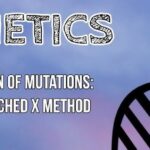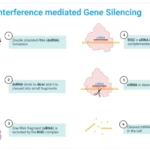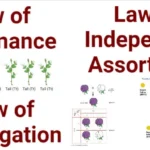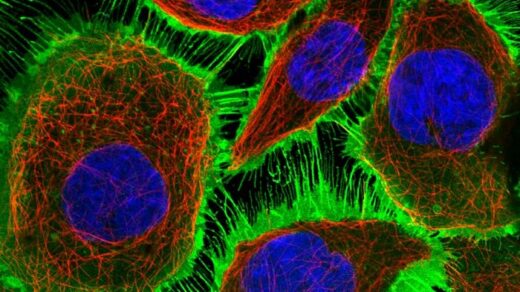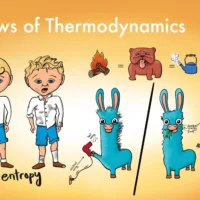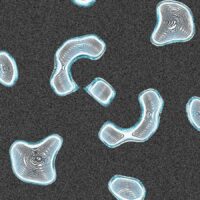Polygenic inheritance refers to those traits that are controlled by more than one gene that are often at different loci positions on chromosomes. Such genes are termed as non-allele genes. A polygenic trait is complex in expression because the phenotype the observable characteristics is the composite result of multiple genes. Due to this complexity, polygenic traits manifest as continuous variation rather than abrupt categories. This renders the relationship between genotype and phenotype far more complicated than what is described under simple Mendelian inheritance.
Important Characteristics of Polygenic Inheritance
1. Continuous Variation
In polygenic traits, phenotypic categories are not sharply defined. Unlike single gene traits (as observed in Mendelian characters for example, pea plant flower color), polygenic traits present a phenomenon of continuous variation. This simply means that the traits fall within a spectrum, ranging from one extreme to another; such as height, skin color, and kernel color in wheat. Unlike Mendelian traits, which sometimes present abrupt gradations, polygenic traits present smooth gradations.
2. Multiple Non-allelic Genes
Under polygenic inheritance, multiple genes together serve as functional units that contribute to the expression of a single trait. Each of the non-allelic genes has two alleles: one additive and one non-additive. The additive alleles join in the expression of the phenotype, while the non-additive ones contribute nothing in this regard. Collectively, the effects add up to produce the ultimate expression of the trait.
3. Additive Effect of Alleles
In polygenic traits, the alleles at various loci are additive; that means each contributing allele has a small and nearly equal effect on the phenotype. The allelic pairs do not show any dominance. For instance, in the case of the color of wheat kernel, more additive alleles contribute towards darker kernel color and conversely, fewer additive alleles dictate lighter colors.
4. No Dominance or Non-allelic Gene Interaction
Unlike Mendelian inheritance, in which dominant and recessive alleles exist, polygenic inheritance shows no dominance. This means that no one allele suppresses the effect of another. Moreover, there is no interaction among the non-allelic genes; every gene acts individually to contribute to the overall phenotype.
Example: Nilsson-Ehle’s Experiment with Wheat Kernel Color
Probably the best-known experiment on polygenic inheritance was done by Swedish geneticist Herman Nilsson-Ehle, showing that several genes are involved in controlling wheat kernel color.
P (Parent) Generation
Nilsson-Ehle crossed one plant having dark red kernels with another having white kernels.
F1 Generation
All the offspring from this cross (F1 generation) produced intermediate pink kernels (RW), with none displaying either of the dark red or white phenotypes that the parents displayed.
F2 Generation
If F1 plants were allowed to self-cross, the F2 generation presented five different phenotypic classes of kernel color: dark red, red, pink, light red, and white. These phenotypes occurred in a ratio of 1:4:6:4:1.
Nilsson-Ehle interpreted these results to suggest that two loci of genes control kernel color. From each locus, two alleles exist—one red pigment allele and one nonadditive. The two additive alleles express effects in combination. In other words, each gene contributes equally to the overall color so the more additive alleles, the darker the kernel color. This experiment demonstrated continuous variation while still following Mendelian rules despite the polygenic nature of the trait.
Genetic Explanation and Additive Model
The phenotypes in polygenic traits are additive sums of contributions from many genes. Each contributing gene has two alleles, one additive and one non-additive. For illustration, consider three pairs of genes (Aa Bb Cc) that control kernel color:
- If all six contributing alleles were present (AA BB CC), the phenotype would be dark red kernels.
- If no additive alleles were present (aa bb cc), the phenotype would be white kernels.
- If three contributing alleles were present (Aa Bb Cc), the phenotype would be intermediate red kernels.
- If more gene pairs are added, more phenotypic classes appear, each with different combinations of additive alleles.
Polygenic Traits and Normal Distribution
The distribution of polygenic traits often follows a normal distribution or bell-shaped curve in large populations—also known as a Gaussian distribution. Most individuals tend to show phenotypes close to the average value for that population, while very few individuals show extreme values. This distribution is symmetric and characterized by its mean and variance. The standard deviation, which is the square root of the variance, measures how spread out the phenotypes are around the average.
Counting the Number of Gene Pairs
The number of gene pairs responsible for a polygenic trait is determined by the phenotypic ratio in the F2 generation. Specifically, the proportion of F2 progeny exhibiting the most extreme phenotypes is used with the formula:
Number of extreme phenotypes = 1 / 4ⁿ
For example, if 1/64 of the F2 offspring express extreme phenotypes, then three gene pairs are involved because 1/43=1/641/4^3 = 1/641/43=1/64.
Number of Phenotypic Classes
As the number of gene pairs increases, the number of possible phenotypic classes also increases. The formula for the number of distinct phenotypic classes in the F2 generation is:
Number of phenotypic classes = 2n + 1
Quantitative vs. Qualitative Genetics
Polygenic inheritance differs from Mendelian (qualitative) inheritance in several ways:
1. Nature of Traits
- Qualitative Genetics: Controlled by single genes; traits fall into distinct categories (e.g., tall or short plants).
- Quantitative Genetics: Traits have continuous variation and are regulated by many genes, such as height and skin color.
2. Variation
- Qualitative Traits: Show discontinuous variation with distinct categories.
- Quantitative Traits: Show continuous variation across a range.
3. Number of Genes
- Qualitative Traits: Inherited in simple Mendelian patterns, controlled by one or few genes.
- Quantitative Traits: Inherited in complex patterns, controlled by several genes with small, indistinguishable contributions.
4. Statistical Analysis
- Qualitative Traits: Analysis is direct, based on counts and ratios.
- Quantitative Traits: Requires estimation of population parameters like mean and variance using statistical methods.
Practice Problems
1. Calculation of Height
Consider a cross between a plant with genotype aa bb and height 40 cm and a plant with genotype AA BB and height 60 cm. If the dominant alleles add quantitatively to height, then the expected height of the F1 progeny would be 50 cm. The 20 cm difference between the parents is due to dominant alleles, each contributing 5 cm. The F1 progeny, having two contributing alleles, would be 10 cm taller than the base height of 40 cm.
2. Gene Pairs Calculation
In a cross where 2/125 of the F2 offspring are as extreme as one parent, the number of gene pairs involved can be calculated with the formula. Since 143=164≈2125\frac{1}{4^3} = \frac{1}{64} \approx \frac{2}{125}431=641≈1252, it means three gene pairs control the trait.
Summary
This treatise on polygenic inheritance explains its basic principles, Nilsson-Ehle’s experiment, genetic mechanisms, statistical analysis, and differences between qualitative and quantitative traits. Polygenic traits follow Mendel’s laws at the gene level but exhibit complex phenotypic expressions due to multiple gene interactions.



